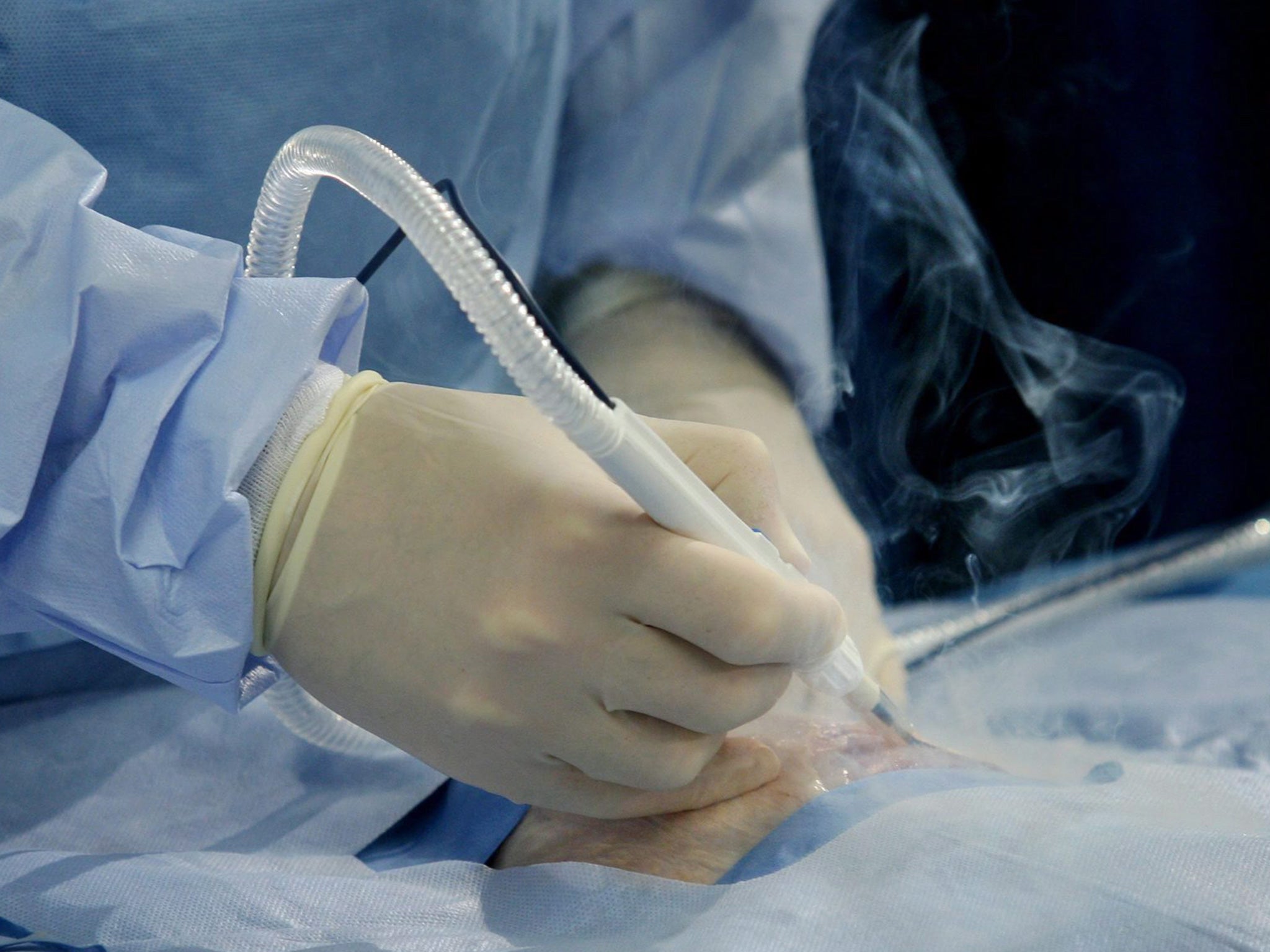Woman feels pain for the first time aged 39 after being born with rare condition
Scientists said that the woman 'quite enjoyed' the mildly painful sensation of being heated by a laser

Your support helps us to tell the story
From reproductive rights to climate change to Big Tech, The Independent is on the ground when the story is developing. Whether it's investigating the financials of Elon Musk's pro-Trump PAC or producing our latest documentary, 'The A Word', which shines a light on the American women fighting for reproductive rights, we know how important it is to parse out the facts from the messaging.
At such a critical moment in US history, we need reporters on the ground. Your donation allows us to keep sending journalists to speak to both sides of the story.
The Independent is trusted by Americans across the entire political spectrum. And unlike many other quality news outlets, we choose not to lock Americans out of our reporting and analysis with paywalls. We believe quality journalism should be available to everyone, paid for by those who can afford it.
Your support makes all the difference.A 39-year-old woman has felt pain for the first time in her life following an experiment that could lead to new ways of treating people with chronic pain, scientists said.
The woman, who wished to remain anonymous, was born with a condition that prevented her from feeling any pain, but a drug normally used to treat drug addiction made her sensitive to a hot laser beam.
Scientists said that the woman “quite enjoyed” the mildly painful sensation of being heated by the laser, which was a novel experience for someone who has been unable to feel any pain since she was a baby.
A handful of people each year are born with a genetic mutation that blocks an “ion channel” in the pain-sensing nerves. Babies born with blocked pain channels need special care because they tend to chew their fingers, lips and toes until they bleed, and toddlers are at increased risk from damaging themselves by knocks and tumbles or contact with hot or sharp objects.
The woman was known to have inherited a mutation in a gene that blocked an ion channel called Nav1.7, which carries sodium ions across the nerve membrane and allows the transmission of pain signals to the brain.
Laboratory mice that were genetically modified to lack the Nav1.7 gene also show an inability to feel pain. This has allowed scientists to develop an animal model of the human condition – and in the process discover a new way of treating chronic pain.
A number of drugs have been developed to block the Nav1.7 nerve channels in the hope they would be promising pain killers, but they produced a disappointingly weak effect. Now scientists believe they have found a way around the problem.
John Wood of University College London and his colleagues have shown that both mice and people with the genetic mutation produce higher-than-normal levels of the body’s natural painkillers, the opioid peptides of the brain.
To examine whether this was important for losing the sense of pain, the researchers administered a drug called naxalone, an opioid blocker used to treat heroin addiction, and found that both the mice and the woman were suddenly able to feel pain again.
“After a decade of rather disappointing drug trials, we now have confirmation that Nav1.7 really is a key element in human pain,” said Professor Wood, the senior author of the study published in Nature Communications.
“The secret ingredient turned out to be good old-fashioned opioid peptides, and we have now filed a patent for combining low dose opioids with Nav1.7 blockers. This should replicate the painlessness experienced by people with rare mutations, and we have already successfully tested this approach in unmodified mice,” Professor Wood said.
The scientists hope to develop effective ways of treating long-term, chronic pain by mimicking the effects of blocking Nav1.7, which seems to produce low levels of the natural opioid pain killers that continue to work for years.
“Used in combination with Nav1.7 blockers, the dose of opioid needed to prevent pain is very low,” Professor Wood said.
“People with non-functioning Nav1.7 produce low levels of opioids throughout their lives without developing tolerance or experiencing unpleasant side-effects. We hope to see our approach tested in human trials by 2017 and we can then start looking into drug combinations to help the millions of chronic pain patients around the world,” he said.
Join our commenting forum
Join thought-provoking conversations, follow other Independent readers and see their replies
Comments